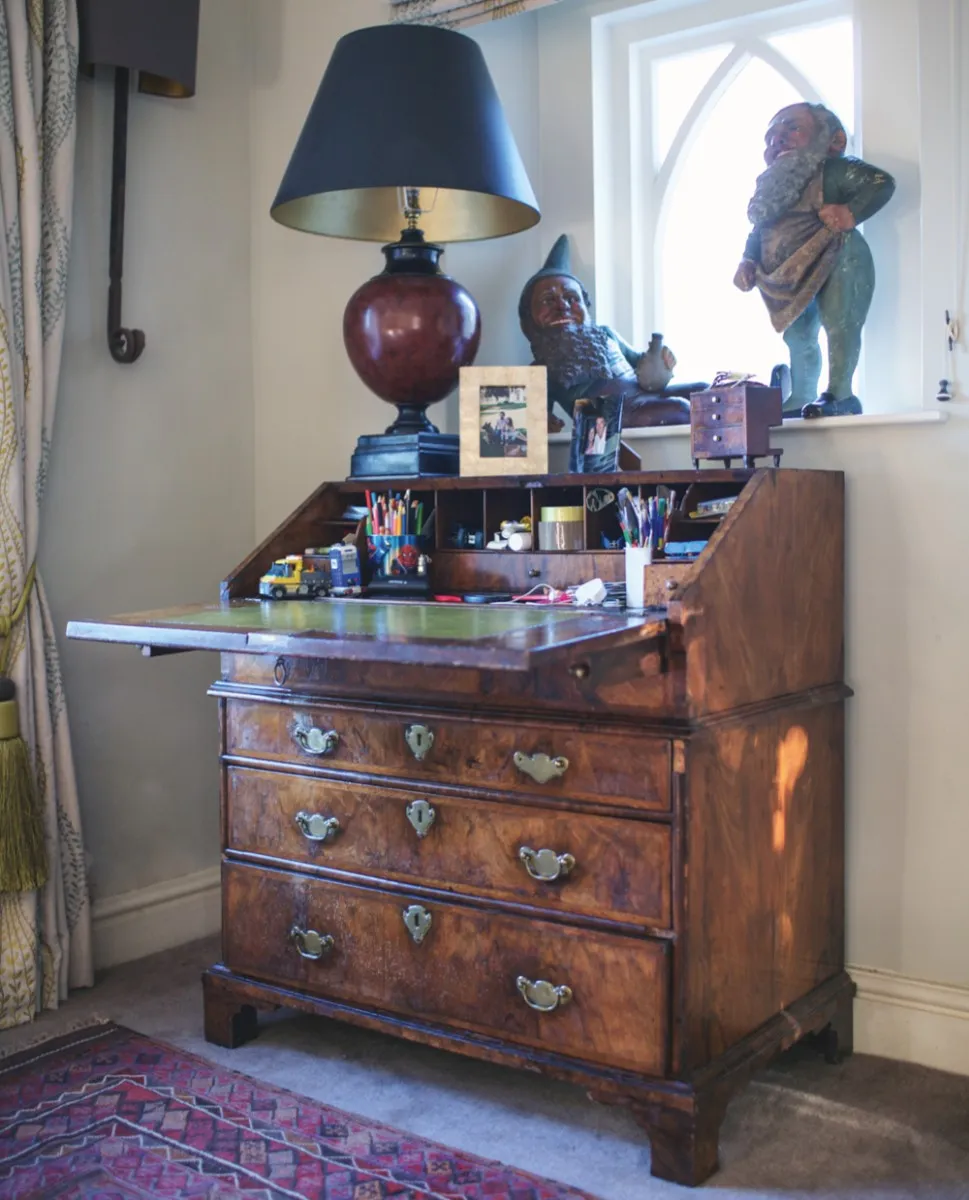Don’t be afraid of pieces that have had additions or changes
If it’s a piece that’s going to be used, it doesn’t matter if it’s not museum quality. Historically, people updated their furniture like they update their kitchens today. They would happily change the handles and feet of a chest, say, to make it look more contemporary and less antique.
If it's veneered, check that it has crossbanding
Well-crafted pieces have veneer crossbandings along all the edges. If you have a veneer that runs to the very edge of a drawer (without crossbanding), if that drawer gets knocked as it is pushed back in, it will chip the veneer. And, if you chip veneer it can create cracks up to 2in long because it’s so thin. In order to stop that happening, you crossband it.
Always buy pieces that have been used
For me, you have to buy furniture that’s been used. It’s got to have had a life. It gives it extra credibility. There’s no point in buying something from the 17th century that’s absolutely immaculate because it’s had no life. You want to invent stories of the farmer that’s used it all his life and stubbed out a cigarette on it or let the candle burn out on it. Perhaps he was right-handed so it’s been worn on the edge where he had been writing. It is then that it has a character.
Keep price in perspective
Antiques have never been cheaper. I have a 17th-century bureau in figured walnut (pictured below – see Paul’s interview about it in Homes & Antiques March issue). If you asked someone today to make something like that veneered in walnut and with a fitted interior it would cost a fortune! And it wouldn’t look as nice either.

Look at what you’re buying in daylight before you hand over the money
My top tip for anyone buying a piece of furniture or art is, if you really fall in love with something and you’re looking at it in showroom condition under artificial light always ask to see it in natural daylight. Any blemishes, restorations and alterations will become apparent in natural light. Just ask to take it out on to the pavement outside.
Build up a relationship with your antiques dealer
I love to buy from Will Fisher at Jamb on Pimlico Road in London because he is a proper old-fashioned dealer and there aren’t many left. He’s someone you can build a relationship with and who will let you borrow a piece to see it in situ. He’s also relatively affordable to buy from and always up for a deal. If you can’t afford it, he’ll give you something on approval and will let you pay in instalments.
Buy recent British art
Twentieth century British art is a good buy – some of the artists from the First or Second World War are becoming particularly sought after. And furniture, particularly early Georgian, has never been cheaper. Invest in pieces of great British craftsmanship created by a real cabinetmaker who has made it his life’s journey to study cabinetry.
Live with your antiques but be kind to them
You have to be happy to put a coffee down on your table and be fine with it but at the same time you have to look after it. Don’t put antique pieces in direct sunlight or right by a radiator and make sure they’re treated for woodworm. That said, simply by agitation and use a piece of furniture won’t get it because worms don’t like things like the opening and shutting of drawers. Imagine how deafening that would be.
Images: Grant Scott
